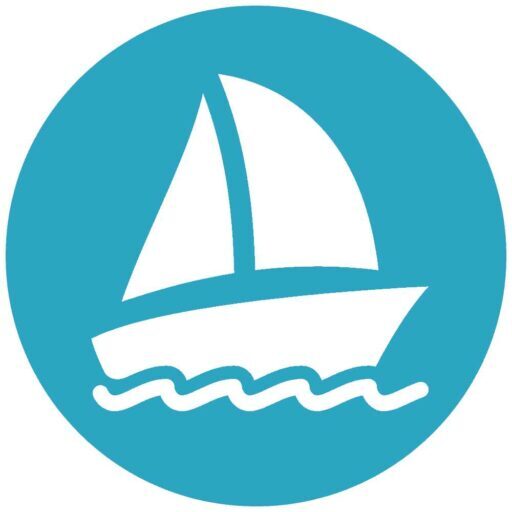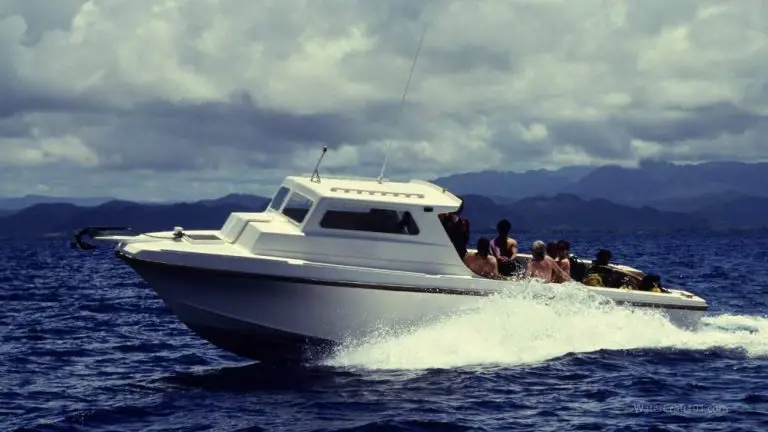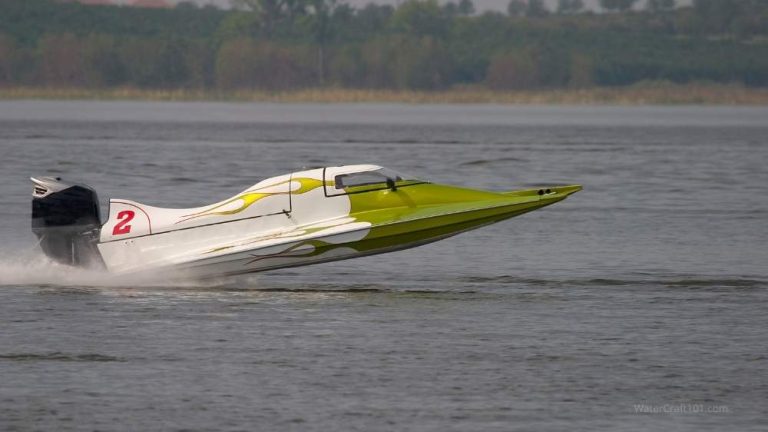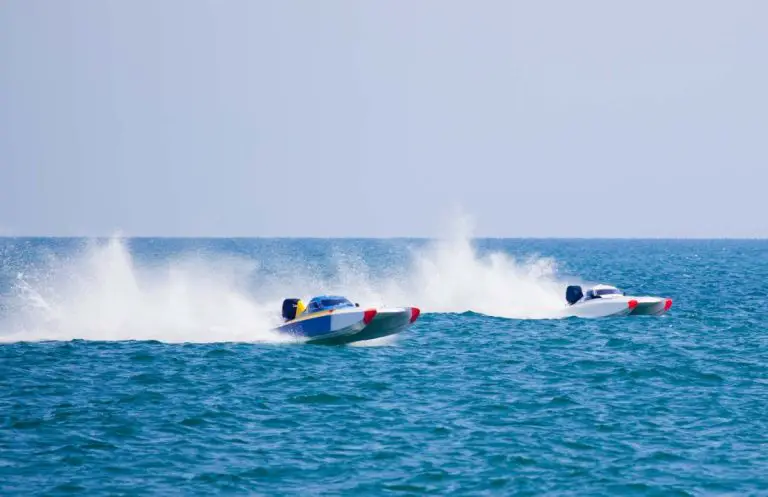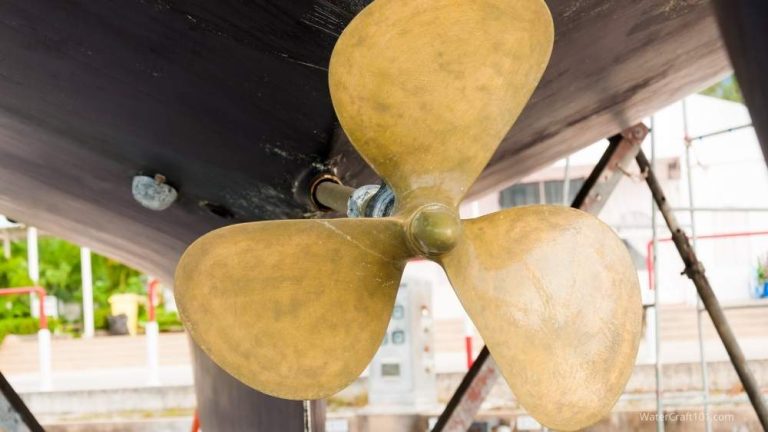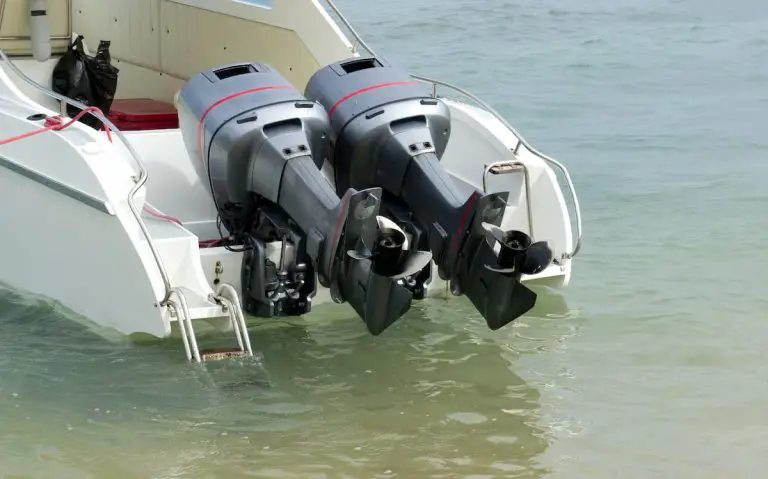How to Trim a Boat Like a Pro (Beginners Guide)
Properly trimming a power boat can help you adjust the stern and bow in such a way as to significantly affect the boat’s speed, fuel economy, and overall performance. It’s all about physics, as a properly trimmed boat can help you glide on the water more efficiently. However, a lot of beginning boaters want to know how do you trim a boat?
Trim refers to the running angle of any boat in the water. The process of adjusting the trim to achieve a perfect angle for the output is called “boat trimming.” Trimming a boat requires adjustments that affect how high or low the bow of the boat is riding in the water.
This article is a beginner-friendly guide to trimming a powerboat. Make sure to read this article until the end to learn about each of the eight steps you need to know to properly trim a boat.
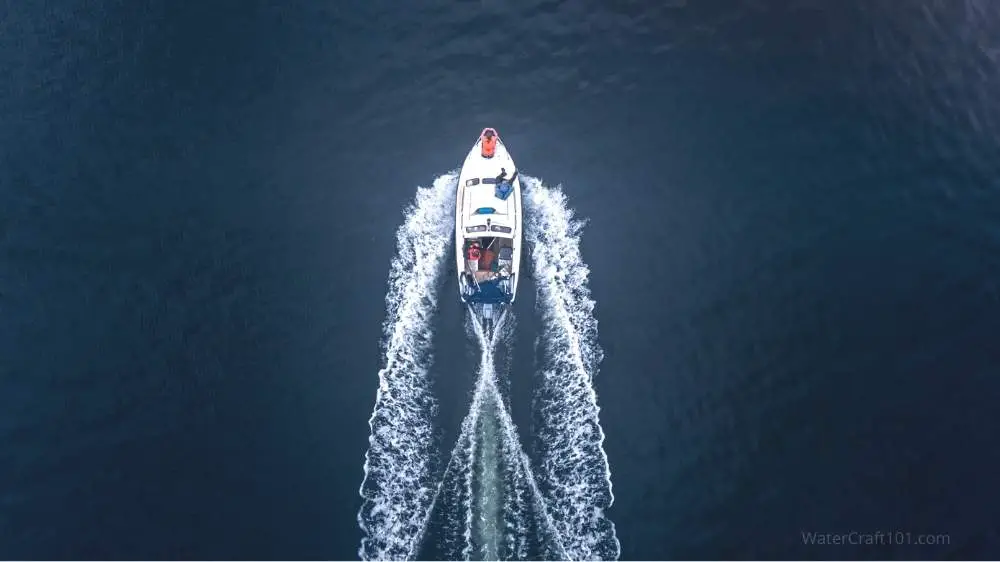
How to Trim a Power Boat In 8 Easy Steps
In this section, we will discuss the trimming process and teach you how to get started. The process can be a bit complex for newbies, so don’t rush, and feel free to read through this article a few times if need be (if necessary you can even bookmark this page to read again later).
1. Boat Trim: Learning The Basics
For the sake of understanding, we’ll just go ahead and assume you know nothing about trimming a boat, so we’ll cover the basics first. What exactly happens when you trim the boat? What’s the control that achieves it? How does the boat function when you trim the boat?
When the boater trims the boat, the engine’s leg (angle of the motor) moves inwards or outwards from the boat’s stern. It causes the stern to sink or lift, causing the boat’s bow to sink or lift simultaneously. When the stern sinks, the bow will lift a little and vice versa (similar to a seesaw).
2. Types Of Trimming (Positive & Negative Trim)
The next step is to learn the types of trimming. It’s essential to learn the technical terms to understand this article better. Trimming can be of two types: i) negative trim, ii) positive trim.
a. Positive Trim
When you raise the bow by trimming the motor’s prop outwards (away from the boat’s transom or rearmost vertical structure), it causes the transom to sink a little into the water.
b. Negative Trim
When you trim the engine’s leg inwards (prop moves towards the transom), the stern lifts a little, causing the bow to sink in relation.
There’s an easy trick to remember all this. When the bow lifts, it’s positive trim, while the negative trim is when the bow sinks.
3. Controlling/Applying The Trim on a Boat
Now that you understand how the basics of how trim works and the two different types, it’s time to learn how to apply and control the trim.
Usually, outboard engines come pre-installed with the adjustable trim feature right out of the box. To apply positive or negative trim, all you have to do is press the controller’s toggle button on the dash or throttle. That is, assuming it’s in the standard place. (Pull the boat owner’s manual and look it up to be certain where the trim controls are for your boat.)
Trim adjustment is achieved using a hydraulic adjustment on the engine, which makes the outboard motor’s leg tilt and move as desired. The trimming causes lifting of the boat’s stern to sink the bow and vice versa.
Note: Some small boats or boats with weaker engines (below 30 HP output) don’t have a pre-installed adjustable trim feature. Luckily, there are trim tabs available on the market, which can get the job done. Trim tabs, however, tend to be more expensive and difficult to deal with than having the trim feature built into your boat.
To further understand the trimming process through a visual representation, check out the video below.
4. Learn Power Trimming
Most outboard engines (30 HP and above) come with the power trim and tilt feature right out of the box. The power trim feature is used while the boat is in motion. The basics of power trim are relatively easy to understand.
Before accelerating, tuck the engine’s leg in so that the bow is down. It is also called negative trim since the bow is down. Once you’ve gained some speed, add a little positive trim and the bow will rise a little. The amount of positive and negative trim required is something that you’ll learn with time and practice.
5. Mastering The Trim For a Smoother & Efficient Ride
a. Mastering The Trim For Normal Weather
A wrong amount of trim can cause unexpected results; here’s how! If the bow is too low, it can catch the waves (crash into the waves), potentially causing a massive misbalance. When you feel the bow is too low down and the front end of the boat is smacking into the swell or waves (also called porpoising), never hesitate to apply some positive trim to be able to raise the bow out of the water a bit.
As the boat’s speed increases, you can increase the amount of positive trim.
This way, less of the boat’s surface will be in contact with the water, resulting in less friction. Less friction will let you gain speed without putting as much load on the engine(s), which means improved fuel efficiency.
b. Mastering The Trim For Rough Weather
During the rough weather, you must do the opposite. It would be best if you kept your bow down (negative trim) in such a manner that the hull’s V (vee) can slice through the water better. If you still decide to keep the bow up, here’s what can happen! Only the hull’s flat surface will be in contact with water (since the vee part will be up in the air).
As a result, the flat part will be vulnerable to accidents, and you can quickly lose balance. Hence, it’s strongly advised to keep the cutting edge of the V in contact with the water to cut the water (negative trim).
While in the case of rough weather, negative trim will reduce bow-steer and increase fuel consumption, it will also make for a smoother ride than if your bow was up in the air.
Again, you’ll learn this with time, practice and patience!
6. Understanding The Importance Of Trim
You must be thinking about why positive trim is so important? Here’s why!
Lifting the bow (by trimming the engine’s leg(s) outwards) when the boat has gained some speed allows the boaters to achieve a smoother and more fuel-efficient ride. This is called getting “on plane”. The boat tends to glide comfortably on the water surface, offering smoother riding comfort to the passenger(s).
Furthermore, with the more effortless glide on the water, the boat can efficiently attain speed, helping to achieve better fuel economy. But the most important thing to obtaining such results is applying the right amount of trim at the right time.
7. The Risks of Over Adjusting Trim on a Boat
Applying too much positive trim can result in very little hull contact with the water surface. Running the boat in such a manner is no more than a stunt. The boat will be difficult to control and you’ll be vulnerable to accidents since the boat can quickly lose balance.
Even a slight wind or wave can result in your boat ending up out of control, or perhaps accidentally hitting something on the water surface.
In addition, boat engines have a ventilation system from where it sucks air from near the water’s surface. Too much positive trim can cause this air intake to become submerged and flood your engine.
On the other end of the boat trimming spectrum, it’s also possible to negatively trim your boat too much. If you trim the boat to a point where the bow is too low in the water a wave can come over the bow and swamp the boat.
When it comes to trimming a boat it’s better to make small incremental changes to the trim to adjust for changing conditions rather than going to either extreme.
8. Learning To Trim When Turning At Speed
When turning at speed, trimming becomes trickier. It’s common practice when turning at higher speeds to apply some negative trim. A larger hull area touching the water will increase stability, which is needed when taking a turn. It’s similar to an automobile, where a vehicle with a broader wheelbase will offer increased stability when turning.
To apply negative trim in such a situation, follow these steps:
- Tuck the engine’s leg inwards before initiating the turn. This way, you ensure that the propeller and the hull are correctly in contact with the water surface.
- Once the turn is complete, apply some positive trim as you accelerate and straighten out.
It’s important to remember that applying too much negative trim at this stage can be risky as you won’t want to dig the bow into the water too much. Also, turning at high speed is not recommended. Furthermore, you should reduce the speed when applying negative trim to ensure safety.
Frequently Asked Questions (FAQs)
How long does it take to trim a boat like a pro?
Some boaters fail to ever truly master trim, whereas the majority of boaters will understand and feel comfortable with the concept of trim after a few outings on a boat. Ideally, it requires some patience, practice, knowledge, and skills, to become proficient when adjusting a boat’s trim.
There’s no such specified time limit or period for mastering boat trimming. It can take weeks, months, years, or perhaps your entire life trying to learn and master the skill.
Why is boat trimming considered so difficult?
Trimming complexity depends on several changing variables including the weather, body of water, and the boat you’ll be trimming. All boats react differently to varying trim levels and weather conditions (including the water surface’s current state).
Many people find it challenging to find that sweet spot, a perfect trim level, and speed balance. Once the said sweet spot is found and mastered, you’ll feel like your boat is balanced better than ever.
How do you trim small boats?
Small boats, which don’t have outboard engines with the trim feature can be trimmed with trim tabs which are adjustable panels added to the transom of the boat rather than the engine itself. The process of installing, learning, and mastering to use the trim tabs is different from the trimming discussed in this article.
It’s much more difficult!
Is it feasible to install trim tabs on small boats?
When considering boat engine cost and achievable output, trim tabs aren’t very economical. The installation cost can be relatively high, while you’ll get minimal benefits, hence it’s not considered a good return on investment.
Furthermore, taking the depreciation and wear and tear into account, trim tabs further become less preferred by most boaters.
Final Thoughts On Trimming A Boat
Hopefully, by the end of this article, you have a better understanding of how to trim a boat. All the steps are crucial, so ensure that you’ve read through them thoroughly.
Also, keep in mind that trimming is a hard nut to crack even for a pro, so don’t get down on yourself if seems to be taking a long time to master the technique.
Furthermore, practice this skill in a safe environment, and avoid trying it in open water or areas with a lot of boating traffic. And remember what they say, “practice makes perfect.”
Happy Boating!
Sources:
